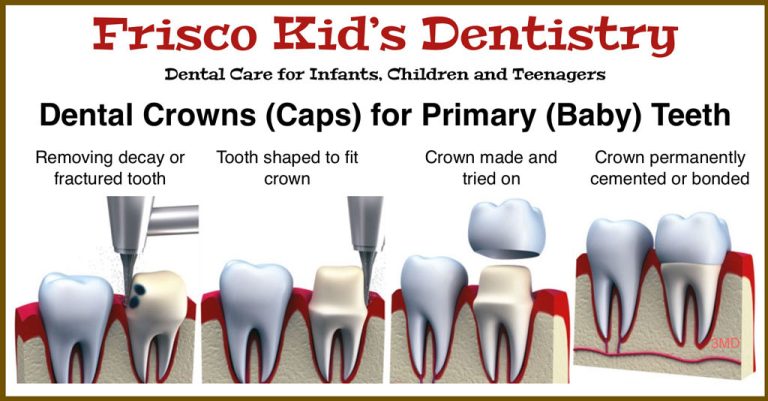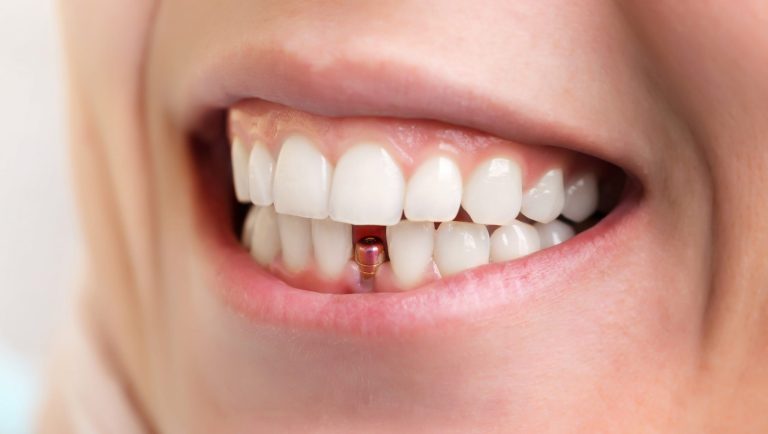Tooth Crown Fell Out? Quick Fixes & Reattachment Tips
Last Updated on 3 months by DR. ALBIN SIPES
A tooth crown that has fallen out can often be reattached. It’s essential to visit a dentist promptly for assessment and potential re-cementing.
Dealing with a dental crown that has come loose or completely detached can be distressing, but it’s a common issue that many face. Crowns are designed to last for many years, yet they can sometimes fall out due to various reasons such as decay, trauma, or the breakdown of the bonding material.
Acting swiftly is crucial as the underlying tooth remains vulnerable without the protective covering of the crown. By seeking immediate dental care, you increase the chances of having the crown securely placed back onto the tooth. A dentist will evaluate the crown and the tooth to ensure the fit and integrity are suitable for reattachment. Preserve the crown in a safe place and avoid delay in scheduling a dental visit to address the issue. Keeping oral hygiene a priority can prevent further complications and ensure the longevity of your dental work.

Introduction To Dental Crowns
Dental crowns play a crucial role in restoring damaged teeth. They act as protective caps, covering and safeguarding the tooth’s structure. Crowns restore the tooth’s shape, size, strength, and improve its appearance. When a crown falls out, it raises concerns about dental health and function.
The Role Of Crowns In Dental Health
Crowns serve multiple purposes in dental care. They:
- Protect weak teeth from breaking
- Restore already broken teeth or severely worn down teeth
- Cover and support teeth with large fillings
- Hold dental bridges in place
- Cover misshapen or discolored teeth
- Cover a dental implant
Common Reasons For Crown Dislodgement
Several factors can lead to a crown falling out. These include:
| Reason | Explanation |
|---|---|
| Decay | Underlying tooth decay can reduce crown support |
| Eating habits | Sticky or hard foods can dislodge crowns |
| Dental trauma | Impact from accidents can knock crowns loose |
| Improper fit | Poorly fitted crowns may not stay in place |
| Adhesive failure | Cement can wear out over time, leading to looseness |

Initial Steps After Crown Falls Out
Discovering your tooth crown has fallen out can be alarming. Don’t panic. Quick action can help save your crown. Follow these initial steps promptly.
Inspect The Crown And Tooth
First, examine the crown and your tooth. Check for damage. If the crown is intact and your tooth is not in pain, a dentist might reattach it. Look for chips or breaks on the crown. Check your tooth for any fragments. If you find pieces, save them. Your dentist will need to see them.
Safe Storage Of The Dislodged Crown
Next, store the crown safely. Keep it in a clean container. A small box or a zip-lock bag works well. Ensure the container is dry to avoid damage. Bring the container with you to the dentist. This step is crucial for the potential reattachment of your crown.
- Locate the crown
- Check for damages
- Use a clean container for storage
- Keep the container dry
- Bring it to your dental appointment
Contact your dentist immediately. Explain the situation. Schedule an appointment as soon as possible. Reattachment might be more successful if done quickly.
Immediate Home Remedies
Immediate Home Remedies can offer temporary relief if your tooth crown fell out. It’s important to take the right steps to avoid further discomfort or damage to your tooth. Here are some quick solutions to manage the situation until you can visit a dentist.
Temporary Adhesives: Pros And Cons
Using temporary adhesives can be a quick fix. They can hold the crown in place temporarily. Yet, they are not a long-term solution. Let’s explore their pros and cons.
| Pros | Cons |
|---|---|
|
|
Cleaning The Affected Area
Before applying any adhesive, clean the affected area carefully. Here’s how:
- Rinse your mouth with warm water.
- Use a soft toothbrush to clean the tooth and crown.
- Dry both gently with a clean cloth.
This step prevents infection and ensures the adhesive works better.

Avoiding Further Damage
When a tooth crown falls out, it’s crucial to prevent further harm. Acting quickly can save your tooth. Proper care is key. To avoid damage, follow these guidelines.
Foods To Avoid
Avoid certain foods to protect your tooth. These can cause pain or more damage.
- Sticky sweets: They can pull on the tooth.
- Hard foods: Nuts or hard candies can hurt.
- Chewy foods: Gum or steak can cause stress.
- Hot or cold: Extreme temperatures can cause pain.
Oral Hygiene Practices To Follow
Maintaining oral hygiene is essential. Follow these steps to keep your mouth healthy.
- Rinse gently: Use salt water to clean.
- Brush softly: Use a soft-bristled brush.
- Avoid the area: Be careful when brushing.
- Don’t floss: Flossing can dislodge the tooth.
When To Contact Your Dentist
A tooth crown falling out is an urgent dental issue. This occurrence can cause discomfort and affect dental health. Knowing when to contact your dentist is crucial for prompt care.
Timing Your Dental Visit
Immediate action is key. Seek a dentist as soon as the crown falls out. Teeth without crowns are vulnerable to damage. They may also cause pain.
- Same day: If pain or discomfort is severe.
- Within 24 hours: To prevent further dental issues.
- Before eating: To avoid food particles in the exposed area.
What To Communicate To Your Dentist
Clear communication with your dentist speeds up the fix. Explain the situation accurately. Mention any pain, sensitivity, or discomfort.
| Details | Description |
|---|---|
| Time of Fall | When the crown came out. |
| Symptoms | Any pain or sensitivity. |
| Crown Condition | Intact or broken. |
Keep the crown safe. Bring it to your dental appointment. Your dentist may reuse it.
Professional Reattachment Process
Has your tooth crown fallen out? Fear not! A professional reattachment process can often save the day. Dentists can usually put it back in place. This process is safe and effective. Let’s dive into how professionals handle such situations.
Evaluation Of Crown And Tooth
The first step involves a thorough check. The dentist examines both the crown and the tooth. This is to ensure they’re fit for reattachment.
- Condition of the crown: Is it broken or intact?
- Condition of the tooth: Is there decay or damage?
These checks help decide the next steps.
Steps Of The Reattachment Procedure
The reattachment process is straightforward but must be precise.
- Cleaning: Both tooth and crown are cleaned well.
- Preparation: The tooth may need to be reshaped for a better fit.
- Adhesive application: A special glue is used to attach the crown.
- Placement: The crown is placed onto the tooth carefully.
- Adjustment: The dentist adjusts the crown for a perfect bite.
- Setting: The adhesive sets, securing the crown.
After these steps, the crown should feel comfortable and secure.
Long-term Care For Your Crown
When a dental crown falls out, it’s a dental emergency. Yet, once reattached, proper care is crucial. Long-term care ensures your crown stays put, serving its purpose. Learn the best practices for maintaining your crown’s longevity.
Regular Dental Check-ups
Regular visits to the dentist keep your crown in check. Dentists spot potential issues early, preventing crown loss. Aim for check-ups every six months. These visits are essential for lasting crown health.
- Inspect crown stability: Dentists assess the crown’s fit.
- Clean hard-to-reach spots: Professional cleaning prevents decay under the crown.
- Update dental records: Keeps track of crown’s condition over time.
Caring For Your Crown At Home
Home care is key for a secure crown. Treat it like a natural tooth, but with extra gentleness. Below are tips to keep your crown safe at home.
| Do’s | Don’ts |
|---|---|
|
|
Alternatives If Reattachment Fails
When a tooth crown falls out, a dentist tries to reattach it. Sometimes, reattachment might not work. In such cases, other options are available. Let’s explore the alternatives if reattachment fails.
New Crown Fabrication
Dentists can make a new crown if the old one cannot be used. This process involves:
- Removing any decay
- Reshaping the tooth
- Taking a new impression
A new crown offers a fresh start. It can last many years with proper care.
Other Dental Restoration Options
Several alternatives exist if a new crown is not suitable. These include:
- Dental implants: These replace the entire tooth.
- Partial dentures: These are removable and replace a few teeth.
- Bridges: These are fixed and fill gaps between teeth.
Each option has its benefits. The choice depends on the tooth’s condition and patient preferences.
Conclusion
Experiencing a fallen tooth crown can be alarming, but it’s often a manageable situation. Prompt action and consulting a dentist are key. They can assess if your crown can be reattached or if a new one is necessary. Remember, maintaining good oral hygiene is crucial to prevent future issues.
Seeking professional advice ensures your smile stays bright and healthy.


